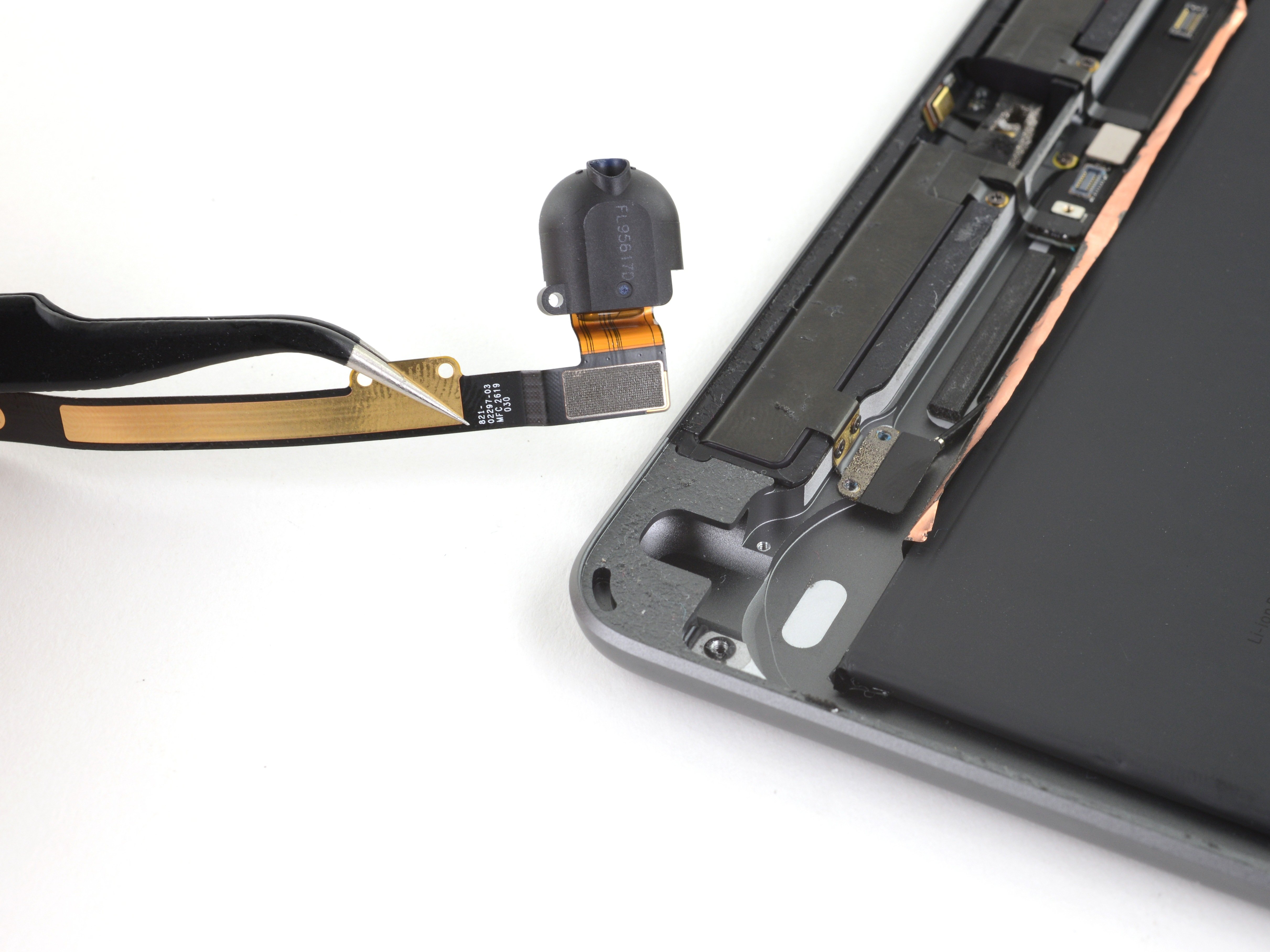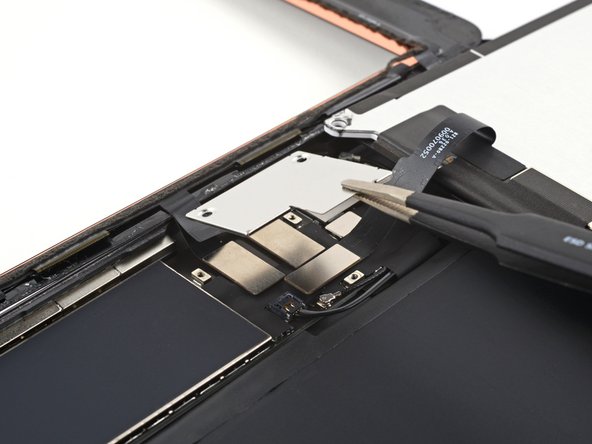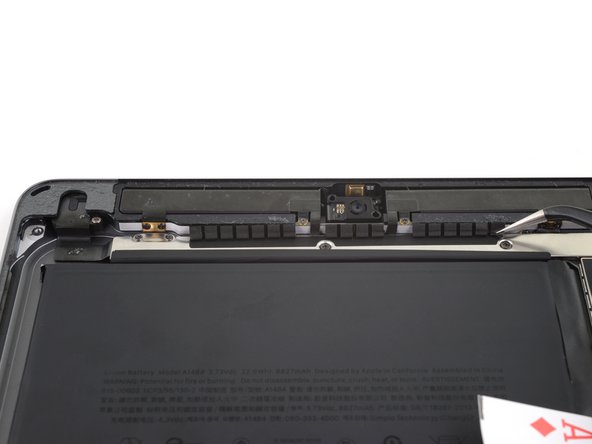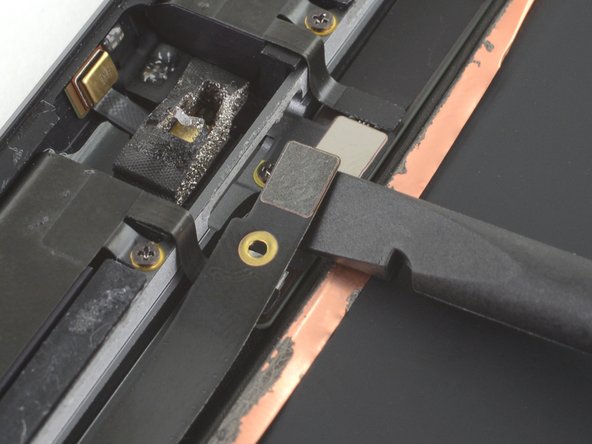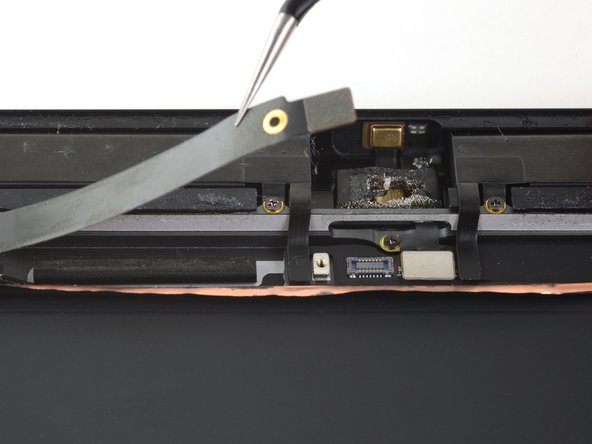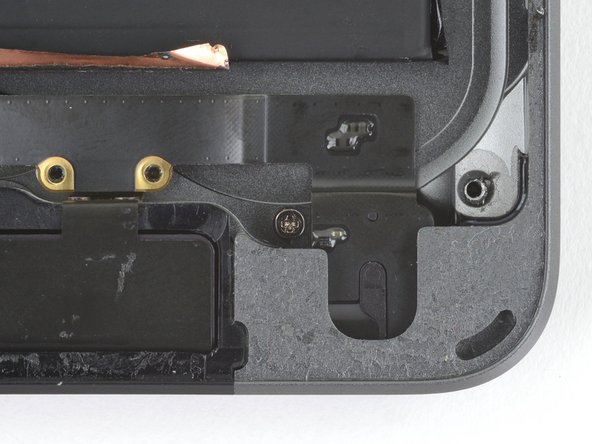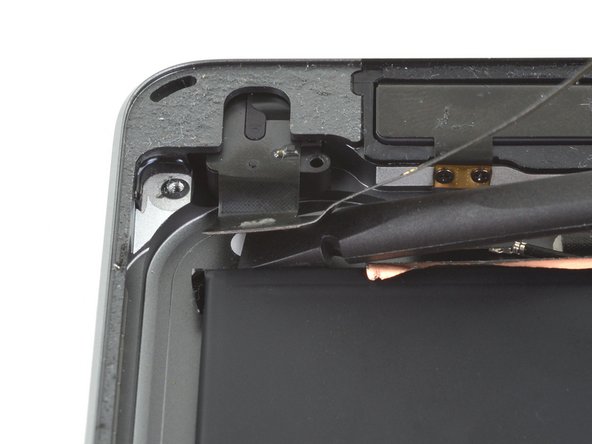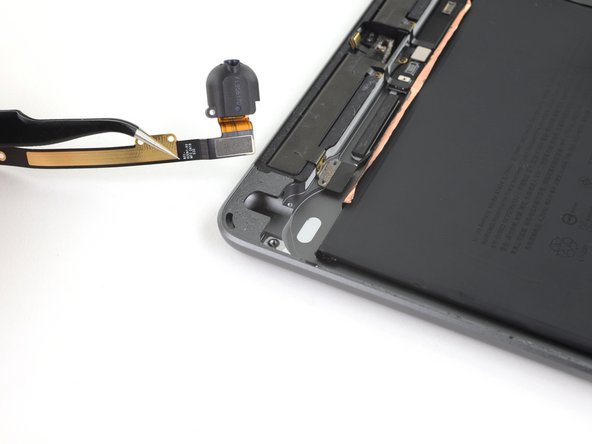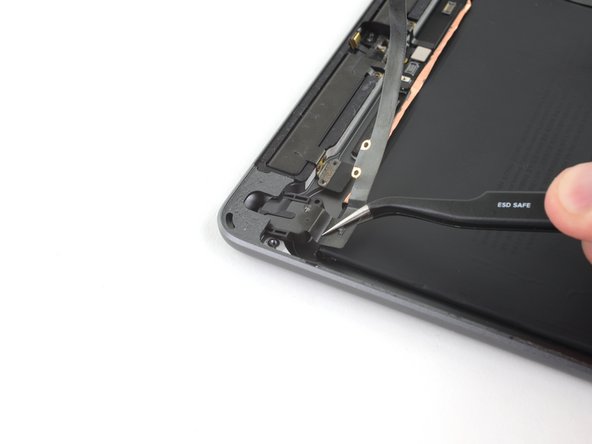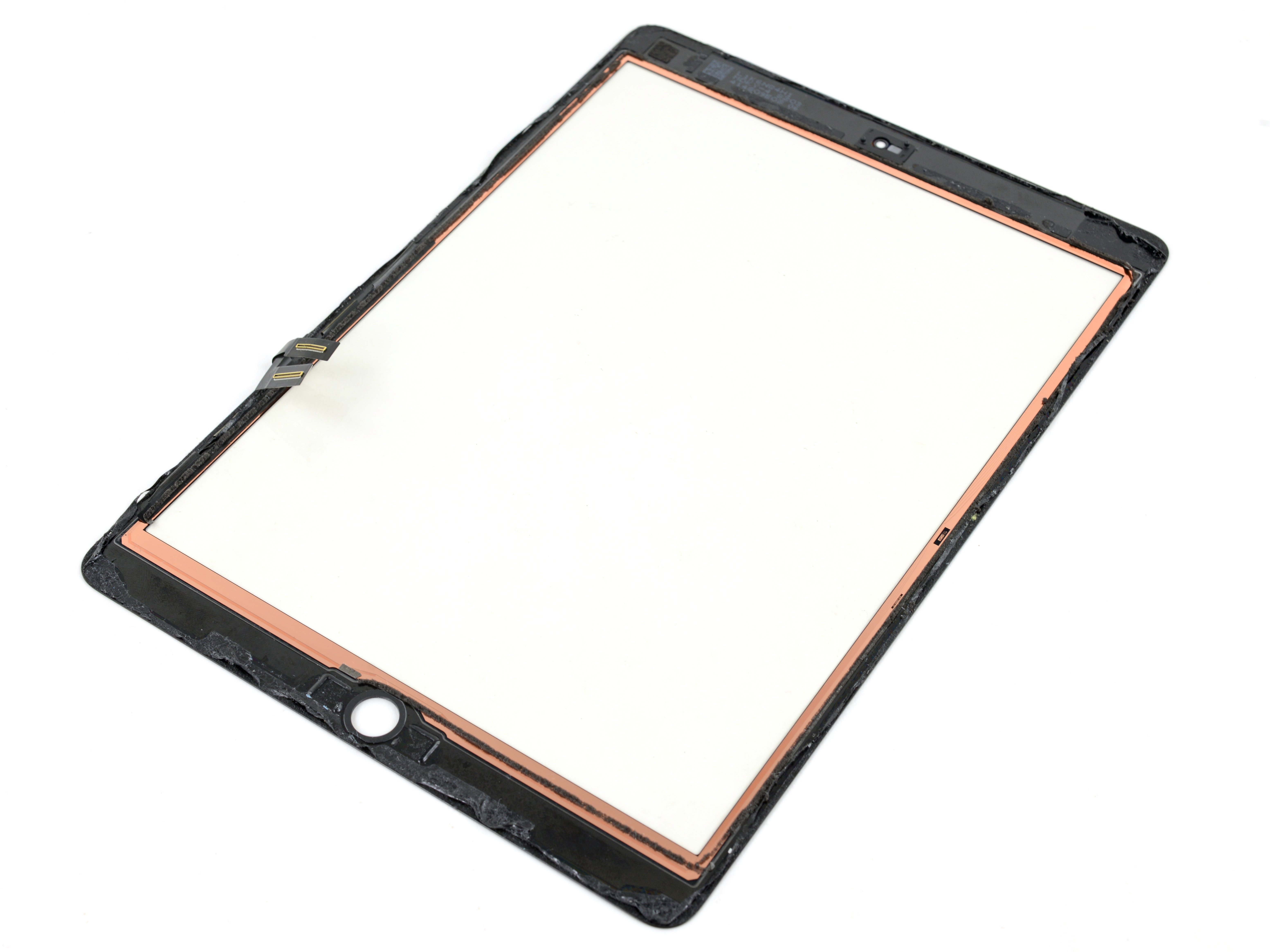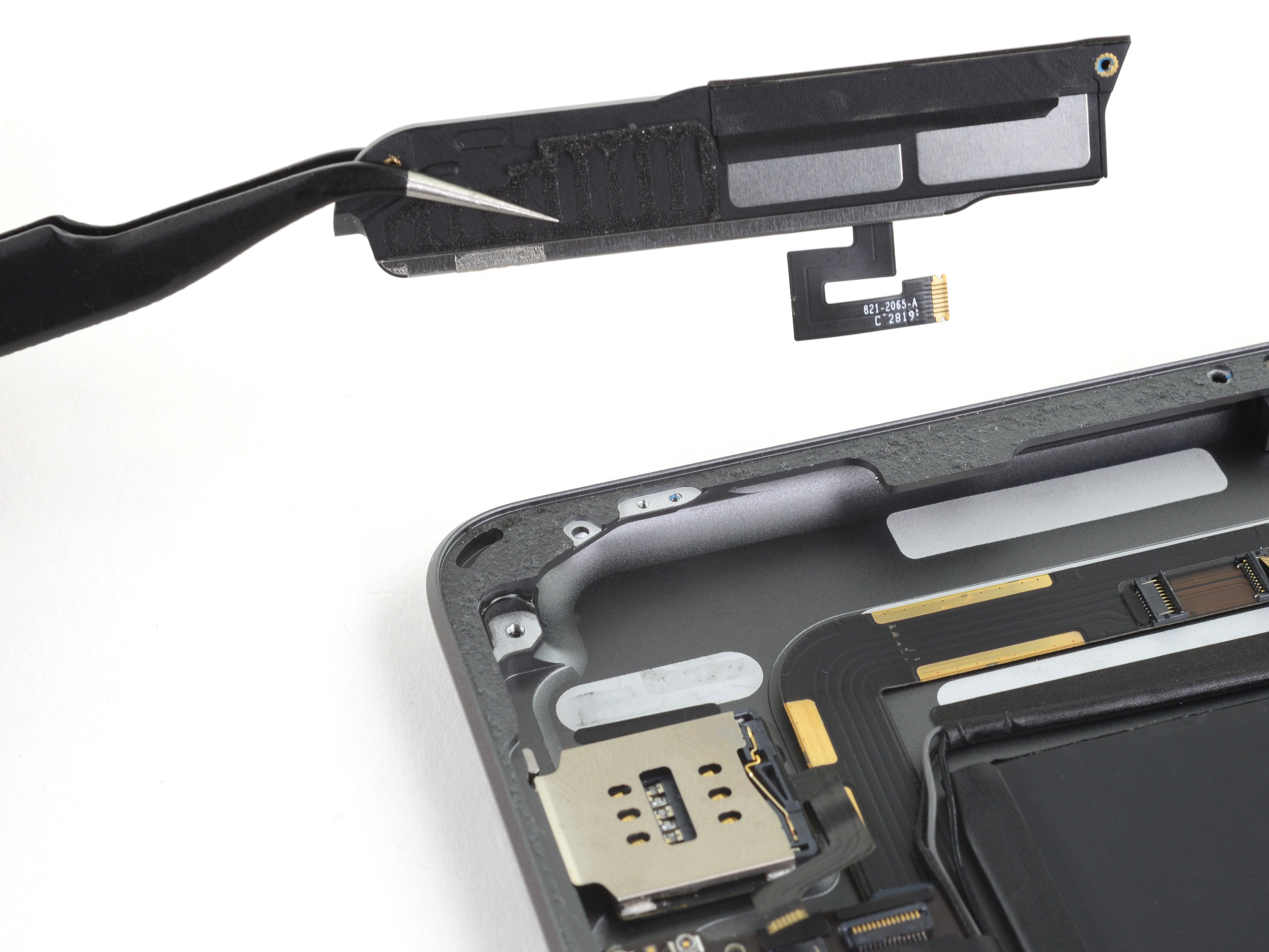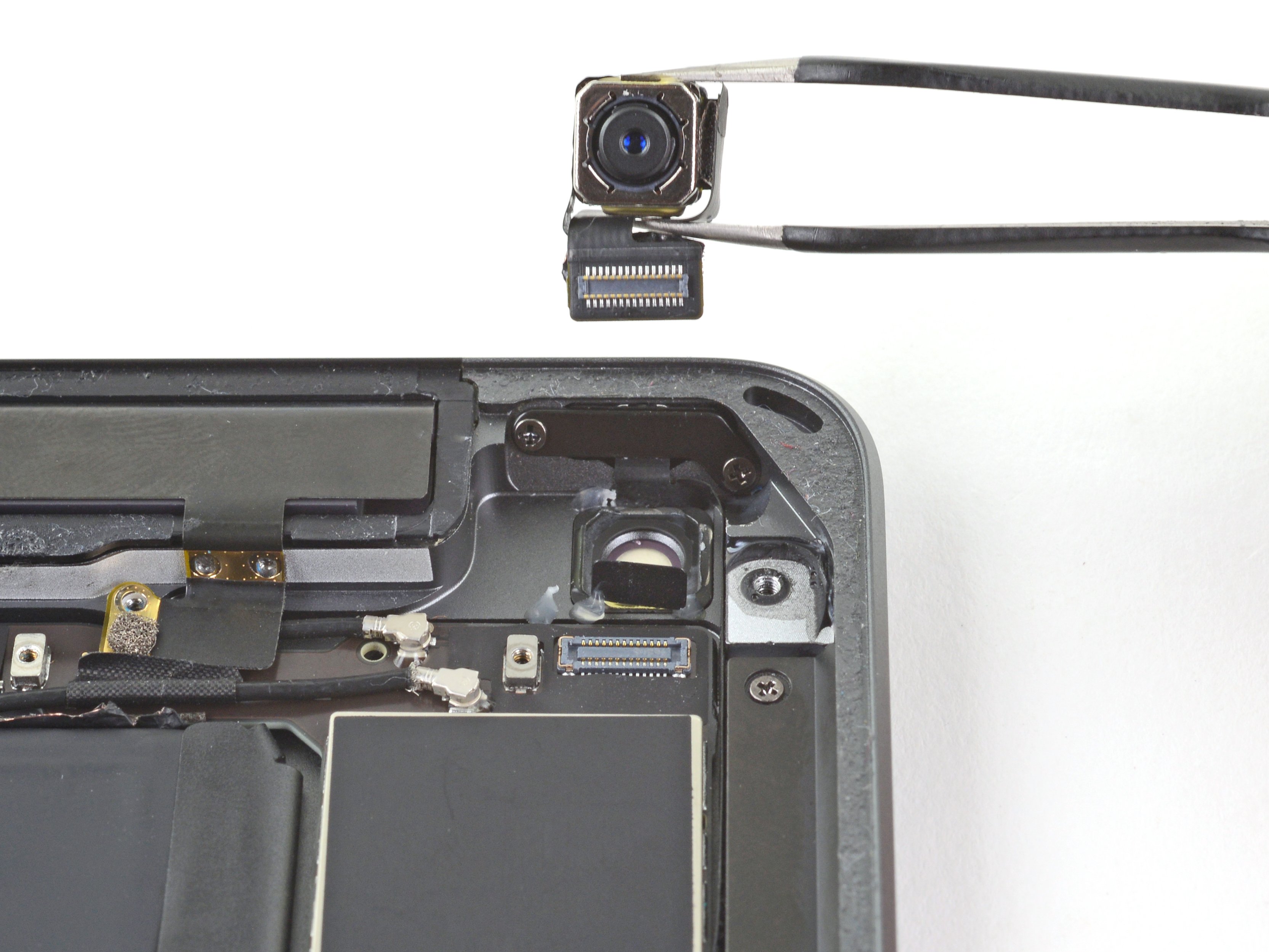iPad 8 LTE Headphone Jack Replacement
Duration: 45 minutes
Steps: 57 Steps
Ready to replace the headphone jack on your iPad 8 LTE? Great! Just a quick heads-up: this guide is for the LTE version only. If you've got the Wi-Fi version, you'll need a different guide. When isolating the battery with a blocker, proceed with caution. Those battery contacts are pretty sensitive, and bending or breaking them can cause some serious damage. If you're skipping the battery isolation step (we get it, sometimes you just want to get straight to the action), make sure to steer clear of metal tools unless absolutely necessary (for screw removal, of course) to avoid damaging your battery or other sensitive parts. A quick note: some of the photos here are from a different model, so there may be tiny visual differences, but don't worry, they'll have no impact on the procedure. If you're feeling unsure or just want some extra hands, you can always schedule a repair.
Step 1
- Warm up an iOpener and let it cozy up to the left edge of your device for a solid two minutes.
Tools Used
Step 2
- While you're waiting for the adhesive to take a little break, be sure to keep an eye on these delicate areas. They're a bit touchy when it comes to prying:
- Front camera
- Antennas
- Display cables
Step 3
The next three steps will show you how to use the Anti-Clamp, our handy little tool designed to make the opening process a breeze. If you're not using it, no worries! Just skip ahead three steps for an alternative method.
Need a full breakdown on how to use the Anti-Clamp? We've got you covered. Check out this guide for all the deets.
If your iPad's surface feels too slick for the Anti-Clamp to grab onto, just stick on some tape to give it a better grip. Easy fix!
- Pull the blue handle back to release the Anti-Clamp's arms—easy does it!
- Set your iPad on something so it sits nice and level between the suction cups.
- Place the suction cups near the center of the left edge—one up top, one down low.
- Keep the bottom of the Anti-Clamp steady and press down firmly on the top cup to get a good seal.
Step 4
- Give that blue handle a pull forward to lock those arms in place like a pro!
- Now, spin the handle a full 360 degrees, or until those suction cups start to stretch out. It's like a little dance for your device!
- Keep an eye on those suction cups to make sure they're still buddies and aligned. If they start to drift apart, just loosen them up a bit and give those arms a quick realignment. You've got this!
Step 5
Turn only half a twist at a time, then chill for a minute. Let the Anti-Clamp and a little patience do the magic!
Want a full walkthrough on how to wield a hair dryer like a pro? Check out this guide.
If the Anti-Clamp isn't opening up enough space, just warm things up a bit more and twist the handle clockwise half a turn.
- Wait for a minute to let the adhesive loosen up a bit and give you the space you need.
- If your screen isn't warming up like it should, try using a hair dryer along the left edge of your iPad to give it a little extra heat.
- When the Anti-Clamp creates enough of a gap, carefully slide the opening pick under the digitizer.
- You can skip the next step and move ahead.
Step 6
If your screen is looking worse for wear with a serious crack, don’t fret! Slapping on a layer of clear packing tape can help the suction cup stick better. Or, if you’re feeling adventurous, some heavy-duty tape can do the trick instead of the suction cup. And if you're really in a bind, a little superglue can go a long way in securing that suction cup to the damaged display. You've got this!
- Once the screen feels warm to the touch, grab your suction handle and stick it right on the left edge of the screen, as close to the edge as you can get.
- Gently pull up on the screen using the suction handle to create a tiny gap between the digitizer and the frame.
- Slide an opening pick carefully into the gap between the digitizer and the frame to help separate them.
Tools Used
Step 7
No need to fret if you spot the opening pick peeking through the digitizer — just gently pull it out. Your LCD screen should be safe and sound, but keep in mind, you might leave some sticky adhesive behind that's a bit tricky to clean up.
- Pop in a second opening pick where you've just made some space.
- Gently glide that pick down towards the bottom-left corner of your device to break free from the adhesive's grip.
- Keep that pick chilling in the bottom-left corner to stop the adhesive from reuniting!
Step 8
- If your opening pick gets a little clingy and sticks in the adhesive, just gently roll it along the edge of the iPad to keep things moving and separate that adhesive like a pro.
Step 9
- Gently glide the first opening pick toward the top-left corner of your device to break that sticky seal. You've got this!
- Once you've made some progress, leave the pick right there in the corner to keep that adhesive from getting cozy again.
Step 10
- Warm up that iOpener and give it a cozy spot on the top edge of your device for a solid two minutes. Let’s get things nice and toasty!
Tools Used
Step 11
- Gently rotate the pick around the top-left corner of the device to break the adhesive seal. Take your time and let the tool do the work!
Step 12
Be careful not to slide the pick across the front camera—it's a delicate little lens! Stick around for the upcoming steps to learn how to keep it safe and sound.
- Gently glide the opening pick along the top edge of your device, making sure to pause just shy of the front camera. You're doing great!
Step 13
- Gently pull the pick out so only the tip stays tucked between the digitizer and the frame.
- Carefully slide the pick over the front camera to loosen up the adhesive.
- Keep the pick resting just to the right of the front camera before moving on.
Step 14
- Slide the pick back in and carefully glide it toward the top-right corner to fully loosen that stubborn top adhesive.
- Keep the pick lodged in the top-right corner so the adhesive doesn’t sneak back and stick together.
Step 15
- Warm up your iOpener and gently press it to the right edge of the device for a solid two minutes. Take your time and let the heat do its magic.
Tools Used
Step 16
- Gently work your pick around the top-right corner of the device to loosen the adhesive. Take it slow and steady, and you’ll get it!
Step 17
The display cables hang out about halfway up from the bottom of your iPad. Ease up on that sliding once you get three inches from the bottom, okay?
- Grab a new opening pick and carefully slide it to the center of the iPad's right edge. You're doing great!
Step 18
- Warm up your trusty iOpener and give it a cozy hug to the bottom edge of your device for a solid two minutes.
Tools Used
Step 19
Avoid spinning the pick all the way around the corner to keep that antenna safe and sound.
- Gently slide the pick into the bottom-left corner to break that stubborn adhesive seal.
- Keep the pick in place before you tackle the next step.
Step 20
Make sure to slide that pick right toward the home button and steer clear of moving it away, or you might just find yourself in a tangle with the antenna!
If you find yourself needing to slide that pick over this area again, just pop it out and reinsert it at the bottom-left corner. You're doing great!
- Pop a new opening pick into the gap you just made along the bottom edge of the iPad.
- Gently slide the pick along the antenna, stopping right before you reach the home button.
- Let the pick rest just to the left of the home button before moving on.
Step 21
Be careful to only insert the pick up to 1 mm—going deeper could put a dent in the right antenna's day!
- Slide an opening pick into the gap you've just made. Go on, give it a little nudge!
- Carefully glide the pick under the home button and towards the bottom-right corner. Just the tip should fit between the digitizer and the frame—like a secret agent sneaking in!
Step 22
Just a friendly reminder: slide that pick gently toward the home button, not away. We wouldn't want you to accidentally mess with the antenna!
If you need to glide the pick over this spot again, just pull it out and pop it back in at the bottom-right corner.
- Slide the pick back in and shimmy it toward the home button to free up that stubborn bottom adhesive completely. You're almost there!
- Now, let the pick chill to the right of the home button before you move on to the next step.
Step 23
- Warm up an iOpener and stick it on the right edge of your device for a solid two minutes to loosen things up.
Tools Used
Step 24
Take it easy with this step! Give yourself some time to make sure the adhesive is nice and toasty, and gently use a pick to separate it all. If you feel like you need a little break, go ahead and reheat that adhesive. You've got this!
If you're feeling some serious resistance, don’t sweat it! Just give those edges a little heat and gently glide along with an opening pick. You've got this!
- Gently twist the two opening picks positioned at the left corners of the iPad to raise the digitizer just a bit, helping to loosen the last stubborn bits of adhesive holding it down.
Step 25
- Gently lift the left edge of the digitizer to help peel away the adhesive along the right edge of your iPad. You're doing great!
Step 26
- As you gently hold the digitizer in place, take an opening pick and slide it between the two display cables. This will help you break free the last bit of that pesky adhesive!
Step 27
- Once you've got all the adhesive peeled away, gently open the digitizer like a book and place it flat next to the iPad.
- When you're putting everything back together, grab some isopropyl alcohol to clean off any leftover adhesive from the frame—and from the digitizer if you're reusing it. Then, stick on our adhesive strips or pre-cut adhesive cards for a nice, secure hold.
- Be careful with those display cables while you're reassembling! Make sure they're neatly folded underneath the LCD screen so they don't get damaged.
Step 28
- Grab some tweezers or use your fingers to gently peel away any tape that's hiding the LCD screws. Let's uncover those screws and get to work!
Tools Used
Step 29
- Grab your trusty Phillips screwdriver and unscrew the four 4.3 mm screws holding the LCD screen in place. You got this!
Step 30
The LCD is gently sticking to the frame, like it’s not quite ready to say goodbye.
- Gently slide a spudger into the gap between the frame and the top-right corner of the LCD.
- Carefully pry with the spudger to loosen and separate the adhesive.
Tools Used
Step 31
- Now, go ahead and do the same thing for the top-left corner of the LCD. You got this!
Step 32
Hold your horses! Don’t try to yank the LCD off just yet; it's still hanging on by a flex cable.
- Gently wedge the flat end of a spudger under the LCD just enough to lift it out of its slot so you can grab it with your fingers.
- Flip the LCD over like turning a page in a book—lift near the camera and fold it back over the home button side of the frame.
- Place the LCD on a clean, soft, lint-free surface to get easy access to the display cables.
Tools Used
Step 33
- Grab your trusty Phillips screwdriver and tackle that 2.3 mm screw holding the battery connector tight against the logic board. You've got this!
Step 34
Check out these snaps to see what the battery connector looks like tucked under the logic board. Keep them handy as a guide while you carefully unplug the battery.
Heads up: the battery connector features cantilever springs on the logic board that press against the battery's contact pads. Since both the logic board and battery are glued down, you'll want to slide a thin, flexible tool gently between the contacts to safely disconnect the battery.
Step 35
Heads up! When you’re isolating the battery with a battery blocker, take it easy—those battery contacts are super fragile and can bend or break easily, which could cause permanent damage.
Make sure the iFixit logo on your battery blocker is facing up like a champ!
Be gentle with that battery blocker—no need to shove it in like you're trying to win a tug-of-war. If it's playing hard to get under the logic board, a playing card can be your trusty sidekick for disconnecting the battery instead.
The battery blocker or playing card should slide in smoothly like it’s on a mission, without any roadblocks. Once it’s in, it should be resting comfortably at about a 15-degree angle, ready for action.
- Gently slide the battery blocker beneath the logic board's battery connector at a cool 35-degree angle. You've got this!
- Keep that battery blocker snugly in place while you continue your work. It's your trusty sidekick!
Tools Used
Step 36
- Grab a Phillips screwdriver and twist out the three 1.4 mm screws holding down the display cable bracket.
Step 37
- Gently use tweezers or your fingers to lift off the display cable bracket—easy does it!
Tools Used
Step 38
- Gently use the flat end of a spudger to lift and unplug the LCD cable press connector.
- When reconnecting press connectors like this one, line up one side carefully and press down until you hear a click, then do the same for the other side.
- Avoid pressing down the middle — if the connector is off-center, those pins might bend and cause permanent damage.
Tools Used
Step 39
- Carefully detach the LCD and lay it down face first on a clean, soft surface that won't leave any lint behind.
Step 40
- Grab your tweezers and gently lift the tape that’s hiding the home button cable ZIF connector.
Tools Used
Step 41
- Grab a spudger, an opening tool, or even your fingernail to gently flip up the tiny, hinged locking flap on the home button cable's ZIF connector — nice and easy!
Tools Used
Step 42
- Grab a trusty pair of tweezers and gently pull that home button ribbon cable straight out of the ZIF connector. You've got this!
Tools Used
Step 43
Careful! When prying, focus only on the connectors themselves—avoid nudging the socket on the logic board to keep your iPad happy and safe.
- Gently slide the flat end of your spudger under those two digitizer cable press connectors and give them a little nudge to disconnect them. You've got this!
Tools Used
Step 44
Watch out! Don’t poke or rip the home button ribbon cable — it’s a delicate little guy.
- Gently slide the flat end of your spudger under the vibration isolator just below the SIM card reader to lift it up.
- Carefully take out the vibration isolator.
Tools Used
Step 45
The cable is held down with a bit of gentle adhesive.
- Grab a trusty pair of tweezers and gently coax the home button cable away from the rear case. It's like giving it a little hug goodbye!
Tools Used
Step 46
Grab an opening pick and gently slice through any stubborn adhesive that might still be holding the front panel in place. It’s like breaking free from a sticky situation!
Without proper insulation, these areas on the digitizer can end up touching other components, which could mess with your touch input. Definitely not the kind of glitch you want.
This insulation is super stealthy—it’s practically invisible to the naked eye and totally different from the foam dust strips you might see on iPads.
- Take off the front panel assembly carefully.
- If your new screen starts acting like it’s haunted with random touches, slap on a super thin insulating tape—Kapton (polyimide) tape works great—on the marked spots on the back of the panel. Replacement digitizers already have this covered, so no extra tape should be needed.
- When putting things back together, clean off any leftover adhesive from the iPad, then wipe down the glued areas with strong isopropyl alcohol (90% or higher) and a lint-free cloth. This preps your device for fresh adhesive and helps it stick like a charm.
- Give your iPad a test run to make sure everything’s working, then apply the pre-cut adhesive strips to the back of the display following our adhesive guide before sealing it up tight.
Step 47
- Gently lift the LCD buffer tape off the upper component bracket, taking your time to ensure a smooth peel.
Step 48
- Grab your trusty Phillips screwdriver and let's get those five screws out of the way that are holding the upper component bracket in place:
- Three screws that are 1.4 mm long and ready to be removed
- Two longer screws measuring 1.9 mm just waiting for their turn
Step 49
You might have to gently peel off the upper component bracket from any tape that's keeping it snugly attached to the logic board.
- Grab your trusty spudger and use the pointed end to gently lift the upper component bracket. Once it's up, give it a little tug with your fingers.
- Now, go ahead and remove that upper component bracket. You got this!
Tools Used
Step 50
- Grab your trusty spudger and gently slide the flat end underneath the front camera cable press connector. Give it a little pry to disconnect it. You're doing great!
Tools Used
Step 51
- Grab your trusty spudger and gently lift the front camera out of its cozy little spot until you can get a good grip on it with your fingers.
- Now, use that same spudger to carefully peel away the adhesive foam pad that's been keeping the front camera snug as a bug.
Tools Used
Step 52
- Grab your trusty pair of tweezers and gently hold the front camera. Now, twist it to the right—clockwise—and slide that cable right through its little slot in the frame.
- Carefully lift out the front camera and set it aside.
Tools Used
Step 53
- Gently use the flat end of your spudger to lift up and disconnect the headphone jack's press connector. A little nudge goes a long way!
Tools Used
Step 54
The headphone jack cable is gently stuck to the frame, so take your time peeling it away.
- Grab some tweezers or just use your fingers to gently lift the headphone jack cable off the frame. It’s a simple move, but make sure you’re doing it carefully to avoid any damage. If you feel stuck, don’t worry! You can always schedule a repair.
Tools Used
Step 55
- Grab your trusty Phillips screwdriver and carefully unscrew the 4.2 mm-long screw holding the headphone jack in place on the back case.
Step 56
- Grab the flat end of your spudger and gently work it under the headphone jack. Give it a little lift to separate it from the rear case. Easy does it!
Tools Used
Step 57
- Put your device back together by following these steps in reverse—easy peasy.
- Got e-waste? Make sure to recycle it responsibly at an R2 or e-Stewards certified center.
- If things didn’t go quite right, try some basic troubleshooting or check out the iPad 8 Answers community for tips.
- And if you hit a wall, remember you can always schedule a repair with us!
